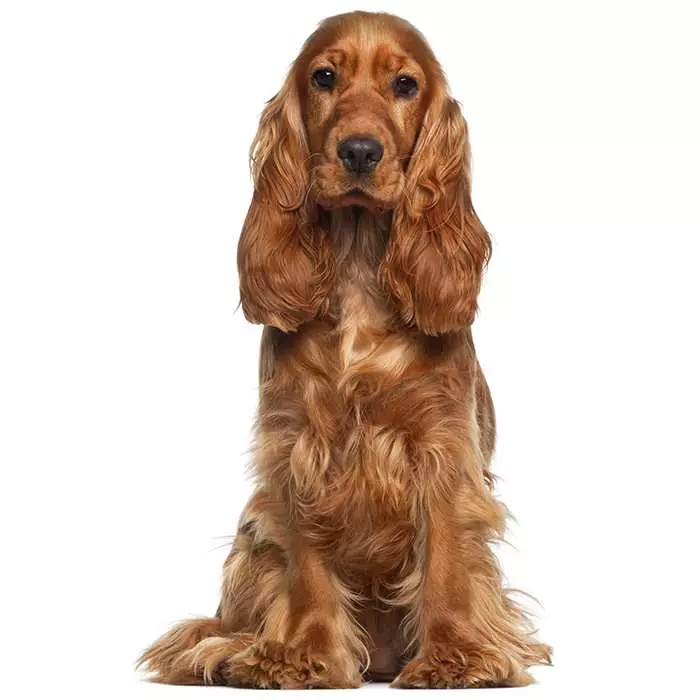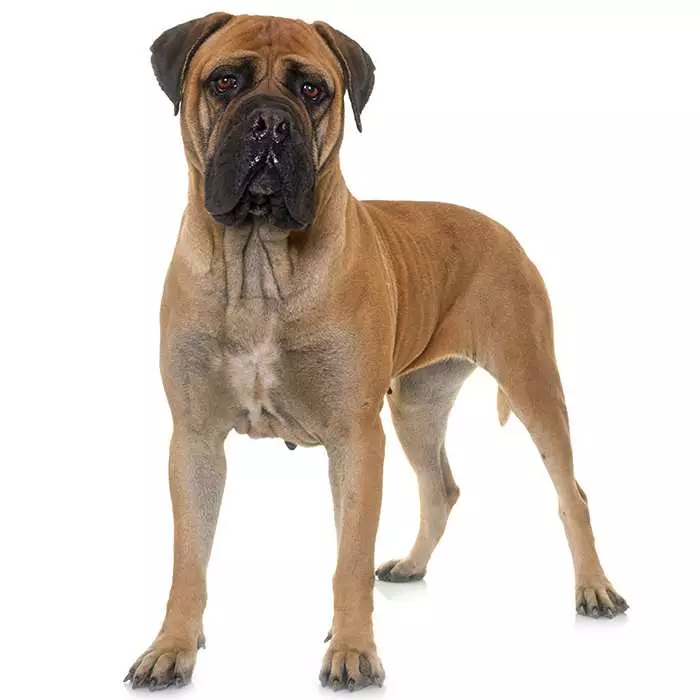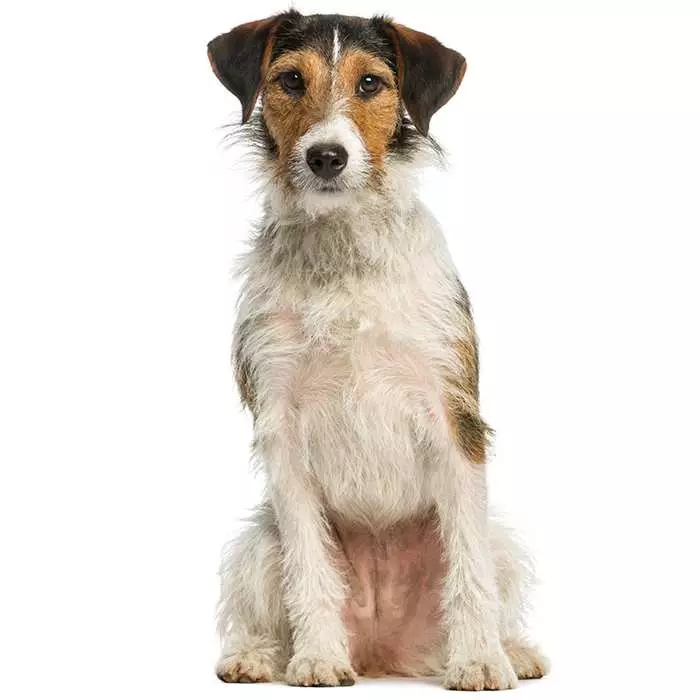Greyhound
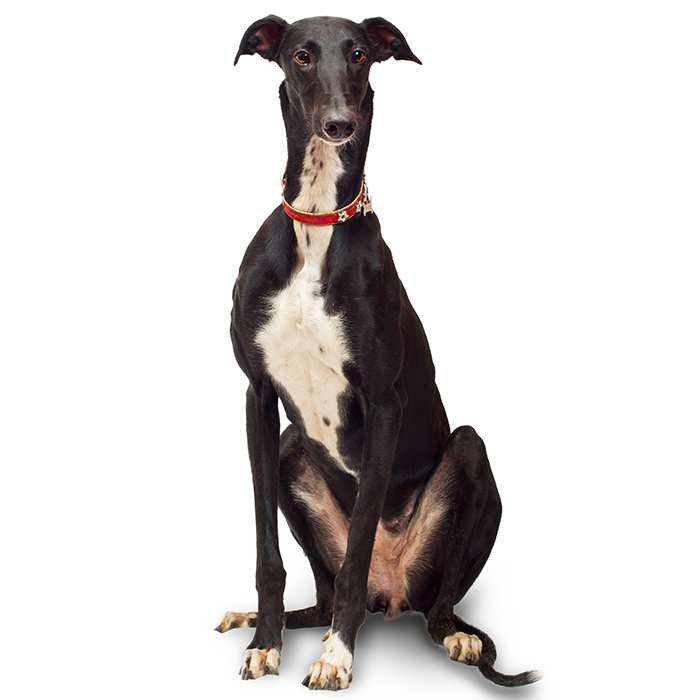

| Recommended for | Families |
| Breed Classification | Sighthound |
| Other names | English Greyhound |
| Lifespan | 9-11 years |
| Size | Large |
| Temperament | Calm, loving, gentle, independent |
| Intelligence | Above average |
| Tendency to bark | Low |
| Maintenance Level | Low to medium |
| Health Risk | This breed has an around average probability of having health issues in its lifetime, hence it is one of the more affordable breeds to insure. |
Insuring a Greyhound?
Get our award-winning Nose-to-Tail Cover with up to $30k annual benefit limit, up to 90% of eligible vet bills back, and no sub-limits.
Get a quick quote
Is this breed right for you?
Try our breed selector quiz to find out your best matching breed!
Insuring a Greyhound?
Get our award-winning Nose-to-Tail Cover with up to $30k annual benefit limit, up to 90% of eligible vet bills back, and no sub-limits.
Get a quick quote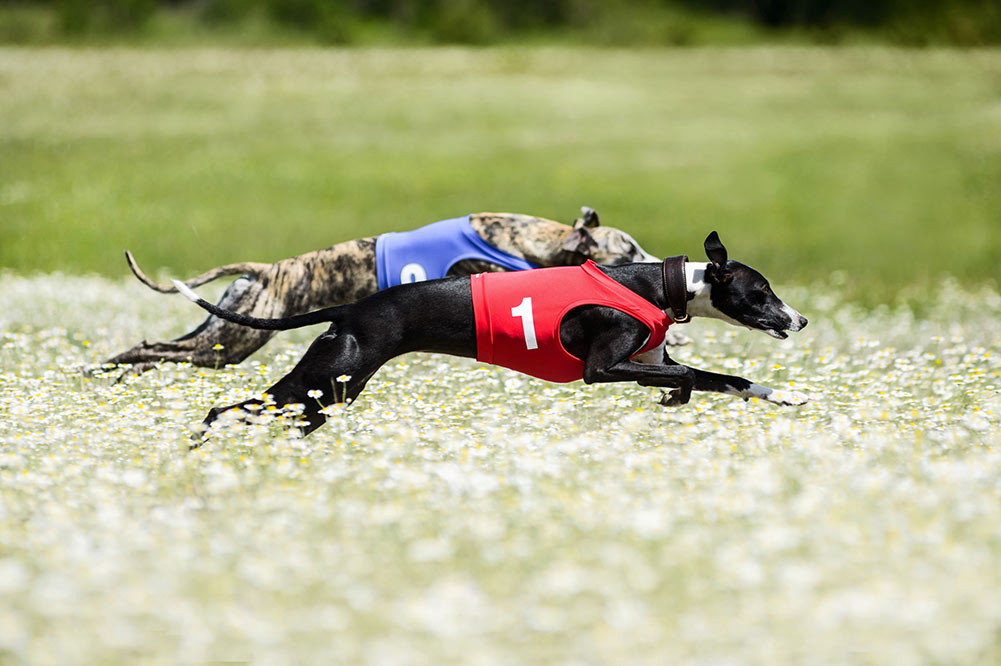
Breed history of Greyhounds
Greyhounds probably date back to ancient Egypt some 5,000 years ago. These hounds of the pharaohs were designed to detect, chase, capture, and dispatch the fleet-footed smaller wildlife of Egypt’s deserts. Although the Greyhound has been used for hunting various species over the centuries, their natural quarry is the hare.
During the Middle-Ages, these regal dogs were displaced from the great halls of the ruling class as people were impacted by famine and disease, but when conditions improved they once again found themselves as pampered companions of the wealthy. Their hunting ability meant that it became an offence to kill a Greyhound and only nobles were permitted to own and breed them at that time.
During the Age of Enlightenment, Greyhounds still featured prominently in the homes of the wealthy as a status symbol. Many portraits of the time featured the majestic Greyhound alongside their owners. Famous artists of the time who included Greyhounds in their portraits included Dupain and Millais.
Greyhound dog racing commenced as an unorganised form of rivalry between owners, over time developing into a form of professional racing that became as popular as horse racing. Oval track Greyhound racing began in America in 1912 when Owen Patrick Smith developed the mechanical hare for the dogs to chase around a track. Australia introduced greyhound racing in 1927.
Nowdays, the Greyhound racing industry is in decline internationally, while in the USA, it is now illegal in 39 states. Australia is currently one of only eight countries in the world with a commercial greyhound racing industry, and it is by far the biggest.
However, with increased attention on Greyhound racing industry practices, more and more Greyhounds are being retired into the role of companion, and it is now fairly common to see re-homed Greyhounds being walked in the streets and at local dog parks thoughout Australia.
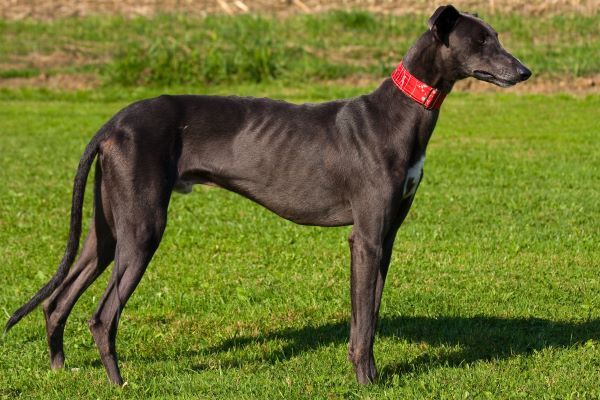
Physical description of Greyhounds
The Greyhound is a large, lean, graceful dog built for sprinting over short distances. With an incredible speed of up to 60 km per hour, they are the fastest of all dog breeds and the second fastest animal on land after the cheetah.
Greyhounds have a very fine, soft, single coat that comes in a vast array of coat colours, including black, white, red, blue, fawn, brindle, or any of these colours broken with white or parti-coloured. Ironically, despite their name, grey (or blue as it is known) is not a very common colour in the breed.
| Weight range | Males 30 - 35 kg; females 24 - 30 kg |
| Height range | Males 67 - 72 cm;s with females 62 - 68 cm |
| Colours | Black, red, white, blue, red, fawn, liver |
| Coat length | Short |
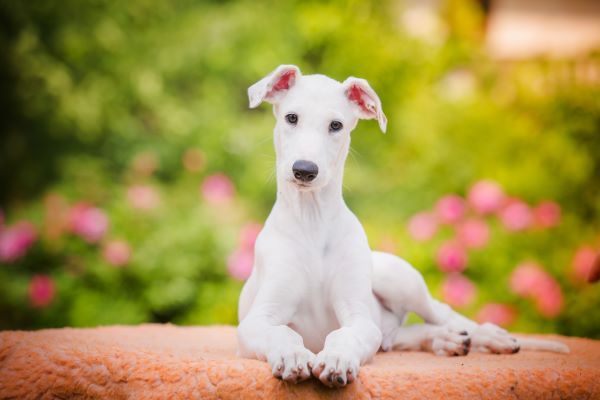
Greyhound personality and temperament
The Greyhound is a gentle, loving and affectionate breed. They love the company of their people, to whom they are totally devoted, and do well as inside dogs.
Despite their speed, they are quite relaxed and low-energy — while they enjoy short bursts of energy, they are often content to just laze about, especially if their beloved human companion is nearby. As they lie around calmly observing the environment around them, they appear to have a superior, almost sphinx-like look about them.
Greyhounds are a low maintenance dog that are generally very easy to live with, clean, good natured, calm, quiet and very trusting. They rarely bark and will often snooze the day away in a cozy spot – usually your bed or the sofa – while you are at work. (However, if you are away from home for longer than 8 hours we recommend that you have a dog walker, friend, or neighbour come to visit.)
Their friendly disposition and lazy nature means they are well suited to most environments and typically make excellent apartment dogs. They require much less room than other breeds of a similar size; despite being large dogs, they can curl up in small spaces, and seldom get under your feet.
Most re-homed racing Greyhounds adapt very quickly to their new life as a family pet and companion. After their demanding and stressful life as an athlete, they tend to glide effortlessly into their new role. New owners should be aware that some things they have probably not experienced before include stairs, slippery floors, mirrors, glass doors, televisions and vacuum cleaners.
The Greyhound is considered as one of the breeds with the fewest typical dog traits. Some even say their personality is cat-like – they are independent, love cuddles when they want them but also like to do their own thing.
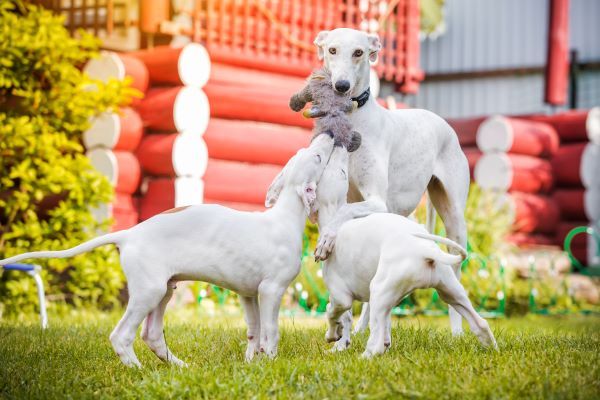
Greyhounds with kids and other pets
Many Greyhounds are suited to living with kids. Generally, they are very gentle with, and tolerant of, children, and are more likely to walk away from a child if they are being pestered than to react. However, they are large dogs though and may easily knock young children over, so it’s supervision is essential around young children (especially under 5’s).
Racing Greyhounds do not usually come into contact with other dog breeds or small animals such as cats or guinea pigs. Also, they were been bred as hunters for centuries, so their instinct to chase small creatures can be very strong. These dogs are often graded for their cat tolerance prior to adoption, and only about 5% to 10% of Greyhounds are deemed to be cat tolerant. There are many re-homed Greyhounds that will never be able to live with a cat, chickens, or pet rabbit.
Fortunately, most Greyhounds are very sociable and often do enjoy the company of other dogs, although they may need some time to get to know them. Generally, they will be fine living with another dog – even a small fluffy one!
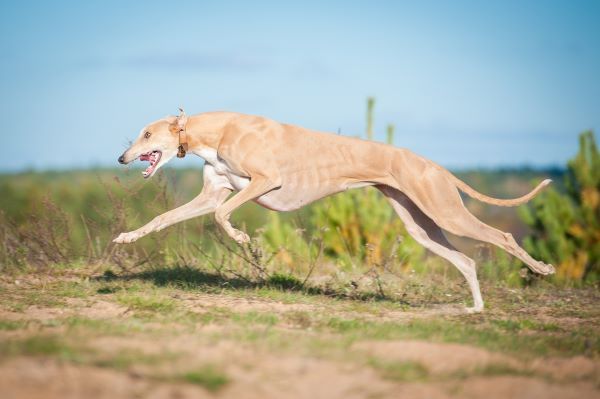
Greyhound training and exercise
Greyhounds do not require a huge amount of exercise and they usually walk well on the leash. More like sprinters than marathon runners, most of them only require a 15 to 20 minute walk each day, while some will require more or less than this dependent on their energy levels and age. They can be a bundle of energy and chase after a ball at top speed, but only for a relatively short time before flopping down for a rest.
For their own safety, Greyhounds should never be allowed to run off leash unless in a fully fenced and safe area. Their combination of great speed and complete lack of traffic sense means they will almost certainly cause an accident if allowed to venture near the road. Also, with their high prey drive, once they glimpse potential prey there’s no stopping them.
Note that some Australian states require Greyhounds to be muzzled when outside of the house, so check with your local council if this applies in your area. Those who adopt racing Greyhounds can have the dog ‘green collar’ accredited, which means the Greyhound has been tested and can be taken for a walk outside the house without a muzzle as long as it wears the accredited green collar and lead.
Being an intelligent breed, the Greyhound will learn new commands or exercises quickly, but can easily become distracted or bored. For this placid and sensitive breed, gentle training methods and positive reinforcement are recommended. Obedience training and socialisaton are important for any dog being adopted into a new home, and good recall training is especially inportant for the rescued Greyhound.
| Energy level | Medium |
| Exercise requirements | Medium |
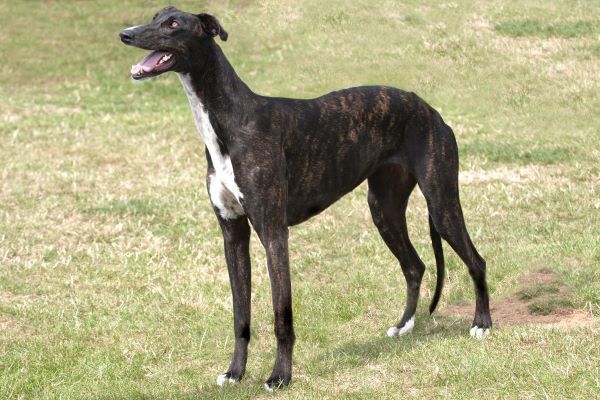
Greyhound feeding and nutrition
The Greyhound should be fed a premium, high-quality, balanced and complete dog food appropriate to the dog’s age (puppy, adult, or senior), size and activity level. Greyhounds should be fed two or more smaller meals a day and all exercise or excitement avoided around mealtimes and for an hour after eating, to reduce the risk of bloat (see Health Issues section).
For variety and interest, you can supplement dry dog food with fresh meat, tinned fish, vegetables and/or eggs, and adjust portion sizes accordingly to maintain an ideal body condition.
Greyhounds that aren’t sufficiently exercised or overfed may become overweight, so watch your dog’s calorie consumption and weight level and don’t overindulge in the treats department. Check with your vet if you have any concerns about your Greyhound’s weight or diet.
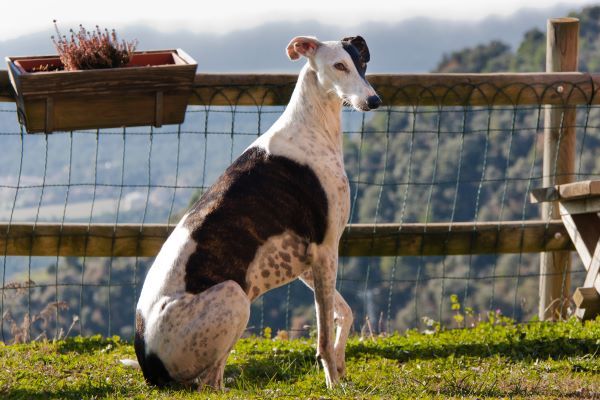
Greyhound care and grooming
Greyhounds do shed, however their thin coats shed considerably less than most other breeds. They also have less of that “doggy smell”. Weekly brushing is recommended – they love a rub with a grooming mitt – to help distribute natural oils through the coat and stimulate blood flow to the skin.
Greyhounds have a very fine, soft single coat and very little body fat. Because of this, they tend to feel extremes in temperature (both heat and cold) more than most dogs. Your Greyhound will need a warm indoor space to sleep in overnight (on cold winter nights your Greyhound will probably try to share your electric blanket or snuggle underneath your doona!)
During cooler weather, you will need to provide a coat or pyjamas for your greyhound overnight, and in colder regions, during the day too.
Health issues for Greyhounds
- Pannus is the abnormal growth of tissue over the cornea and can affect the greyhound. Pannus in thought to be a form of auto-immune disease that affects certain breeds. If this disease is left untreated it can lead to blindness.
- Osteosarcoma, an aggressive bone cancer, is one of the most common cancers in greyhounds. The first sign is lameness, but x-rays are needed to determine if the cause is cancer. It is treated aggressively, often with chemotherapy and amputation. Fortunately, dog amputees adapt quite easily to life with a missing limb.
- Gastric dilatation and volvulus (bloat) are serious, potentially life-threatening, conditions. Gastric dilatation is when the stomach becomes swollen with gas and fluid, while volvulus is the twisting of the stomach. Signs to look out for include retching without vomiting, enlargement of the abdomen and restless pacing. The dog may whine or groan when their belly is touched. To avoid these conditions, don’t feeding your greyhound large meals; spread them out through the day and feed them at least an hour before or after any rigorous exercise.
- Progressive retinal atrophy (PRA) is a disease of the retina that can occur in greyhounds and can lead to blindness. The nerve cells at the back of the eye degenerate over time and will cause cataracts to form. If you suspect your dog has problems with its vision, see your vet for observation as soon as possible. If there is still vision in the eye, corrective surgery may be an option.
- Arthritis may creep in as the Greyhound ages, particularly if they have been racing dogs in the past. Arthritis relates to inflammation of the joint, which hampers movement and often causes discomfort and pain.
Not all conditions are covered by Pet Insurance. For details of Bow Wow Meow Pet Insurance cover, refer to the Product Disclosure Statement.
Thinking about insuring a Greyhound
Thinking about insuring a Greyhound
Learn moreThinking about insuring a Greyhound
Learn moreFree engraved pet ID tag on sign up3
Customer Satisfaction
21 day cooling off
Easy to use Pet Portal

GapOnly® in vet claims
MORE INFORMATION
Greyhounds as Pets: http://www.greyhoundsaspets.com.au/
Greyhound Rescue: http://greyhoundrescue.com.au/
Greyhound Adoption Program NSW: http://www.gapnsw.org.au/home/
Greyhound Adoption Program Qld: http://www.gapqld.com.au/
RCPCA Greyhound Adoption Booklet: https://kb.rspca.org.au/wp-content/uploads/2022/05/RSPCA-Greyhound-Adoption-Booklet-2022.pdf

